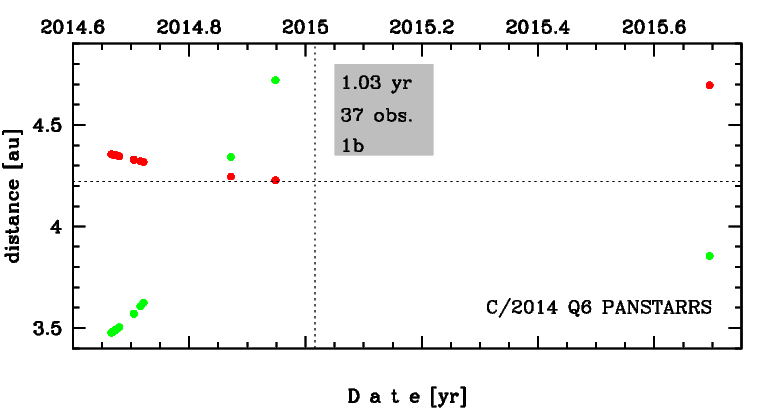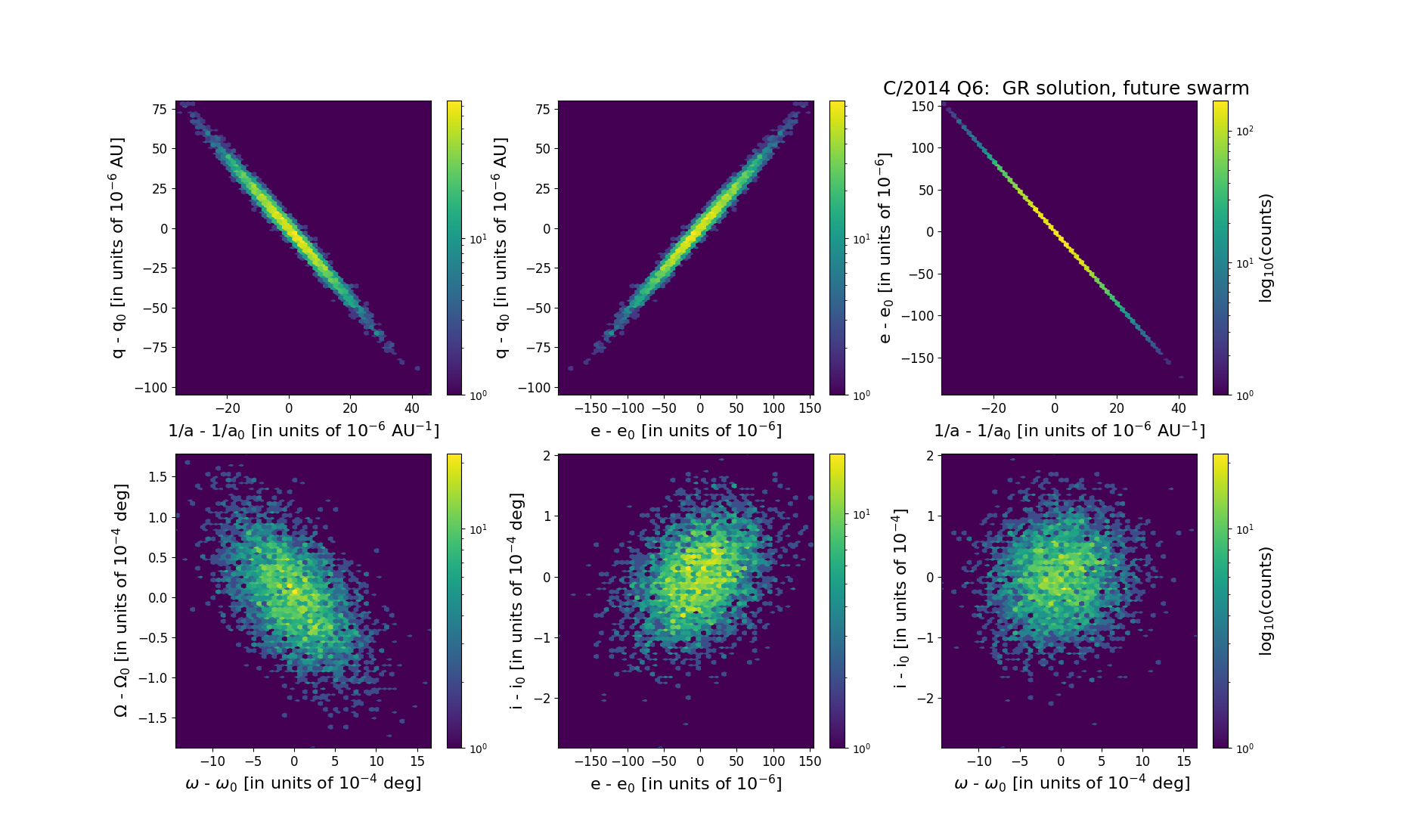C/2014 Q6 PANSTARRS
more info
Comet C/2014 Q6 was discovered on 31 August 2014 with Pan-STARRS 1 telescope (Haleakala), that is about 4 months before its perihelion passage. This comet was observed until 10 September 2015.
Comet had its closest approach to the Earth on 14 August 2014 (3.438 au), about two weeks before its discovery.
Solutions given here are based on data spanning over 1.03 yr in a range of heliocentric distances: 4.36 au – 4.223 au (perihelion) – 4.70 au.
This Oort spike comet suffers small planetary perturbations during its passage through the planetary system; these perturbations lead to a more tight future orbit (see future barycentric orbits).
Comet had its closest approach to the Earth on 14 August 2014 (3.438 au), about two weeks before its discovery.
Solutions given here are based on data spanning over 1.03 yr in a range of heliocentric distances: 4.36 au – 4.223 au (perihelion) – 4.70 au.
This Oort spike comet suffers small planetary perturbations during its passage through the planetary system; these perturbations lead to a more tight future orbit (see future barycentric orbits).
| solution description | ||
|---|---|---|
| number of observations | 37 | |
| data interval | 2014 08 31 – 2015 09 10 | |
| data type | perihelion within the observation arc (FULL) | |
| data arc selection | entire data set (STD) | |
| range of heliocentric distances | 4.36 au – 4.22 au (perihelion) – 4.7 au | |
| detectability of NG effects in the comet's motion | NG effects not determinable | |
| type of model of motion | GR - gravitational orbit | |
| data weighting | YES | |
| number of residuals | 68 | |
| RMS [arcseconds] | 0.29 | |
| orbit quality class | 1b | |
| orbital elements (barycentric ecliptic J2000) | ||
|---|---|---|
| Epoch | 2320 02 29 | |
| perihelion date | 2015 01 06.14589308 | ± 0.00284892 |
| perihelion distance [au] | 4.22843118 | ± 0.00002405 |
| eccentricity | 0.99950521 | ± 0.00004520 |
| argument of perihelion [°] | 2.569308 | ± 0.000412 |
| ascending node [°] | 326.634014 | ± 0.000050 |
| inclination [°] | 49.765324 | ± 0.000058 |
| reciprocal semi-major axis [10-6 au-1] | 117.01 | ± 10.69 |
| file containing 5001 VCs swarm |
|---|
| 2014q6a1.bpl |

